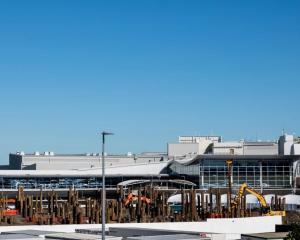
Despite decades of hard work by conservationists, New Zealand’s cherished native birds are closer to extinction than they were 40 years ago.
That is according to a just published analysis that has found more than two-thirds of a large sample of birds are worse off now - compared with only 14% faring better.
The study followed an earlier alarming paper by some of the same researchers that warned eight million years of endemic bird diversity was now at risk - and predicted it would take 50 million years torecover those species now lost.
‘‘This result was very shocking and surprising to me,’’ Massey University evolutionary ecologist Juan Carlos Garcia-Ramirez said.
‘‘So, the next natural questions were, how we can help to reverse this? How can we reduce the risk of endemic birds for disappearing?’’
But first, his team needed to know what that risk of extinction precisely was.
The study drew on the global Red List Index (RLI) -compiled with data from the International Union for Conservation of Nature and other sources - along with information about specific species’biological characteristics.
With colleague Moreno Di Marco, of Sapienza University in Italy, Dr Garcia-Ramirez built a detailed picture to assess how the extinction risk of 30 endemic birds had changed since the 1980s.
They included birds such as kakapo, kea, kaka, weka, yellow eyed penguin/hoiho, whio, black stilt and great spotted kiwi, all of whose status had deteriorated, along with more abundant birds such as tui, rifleman, bellbird and hihi, which were stable.
By calculating a RLI value, a measure ranging from one, or ‘‘least concern’’ and not about to go extinct in near future, to zero, or all species having vanished, they found the collective rate for their studied birds had fallen from 0.83 in the 1980s to 0.68 now.
‘‘This study showed us that despite the serious commitment and pioneering conservation efforts in New Zealand, our endemic birds are a higher extinction risk than 40 years ago,’’ he said.
‘‘About 64% of species have deteriorated their conservation status -and only 14% have improved during these four decades.’’
Flightless and large birds showed higher extinction risks, as did those with long incubation periods before hatching, or which nested at ground level.
Those large and flightless species were more vulnerable to habitat loss, hunting and being killed by mammal predators such as possums and stoats.
‘‘Moreover, species with small clutch sizes, long incubation times, shared incubation, and nest near the ground are expected to suffer most from threats that affect survival and fecundity because they are particularly prone to predation while producing fewer young,’’ he said.
‘‘Kakapo is a great example of this but thanks to translocations to predator-free offshore islands and breeding techniques, there are - thankfully -still a couple of hundred individuals alive.’’
Knowing just what biological characteristics were linked with extinction risk could in turn improve species’ prospects, he said.
‘‘We hopethat the results of this study will be used to predict species that can undergo a high extinction risk and decrease their conservation status,’’ he said.
‘‘Our goal is to understand the drivers and trends in extinction risk by presenting and integrating rapid retrospective assessments to help prevent the disappearing of our taonga species.’’
Other estimates have suggested about 74% of New Zealand’s terrestrial birds are either threatened with, or at risk of, extinction.
New Zealand has 23 bird species at risk of immediate extinction, including the orange-fronted parakeet (kakariki), Chatham Island black robin, New Zealand fairy tern and the white heron.
It has been calculated that rats, stoats and possums alone kill some 25 million native birds each year.
And since the arrival of humans 700 years ago, a further 40 endemic bird species -among them, the huia, the South Island kokako, and the enormous Haast’s eagle -have already been lost.
The Government has acknowledged regulations are not keeping up with the scale of biodiversity loss across New Zealand, and has launched an ambitious new ‘‘greenprint’’ to turn the picture around by 2050.
Comments
Well clearly we all need to kill and poison more animals!
What is shocking and surprising is that anyone would be shocked and surprised by this report! Urban expansion, intensive farming, over fishing, exotic forest plantations, pollution and poor environment protection policies and enforcement. It's amazing there are as many as there is!
Blanket bombing with poison and the targeted extermination of a just a couple of the many thousands of introduced species in this country is never going to work. We can't just kill our way to conservation while continuing to degrade and destroy the birds natural habitat.











